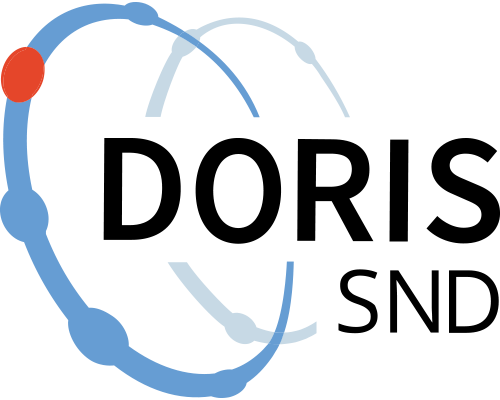Levnadsnivåundersökningen (LNU) 1968
År 1968 genomfördes på låginkomstutredningens initiativ den första levnadsnivåundersökningen (LNU), en undersökning som blivit stilbildande. Såväl i den löpande svenska statistikproduktionen genom SCB:s ULF-undersökningar som i andra länder har undersökningar etablerats som bygger på LNU:s koncept. Grunden är att ett riksrepresentativt urval av den vuxna svenska befolkningen intervjuas om sina faktiska levnadsförhållanden inom en rad områden som är centrala för människors liv, t.ex. hälsa, ekonomi, fritid, boende, politiskt deltagande och sysselsättning/arbetsförhållanden. År 1974 och 1981 ställde Riksdagen medel till förfogande för ytterligare två levnadsnivåundersökningar. År 1991 genomfördes återigen en replikation, då finansierad av åtta olika forskningsråd. Vid alla dessa tidpunkter har i huvudsak samma frågor om levnadsvillkor ställts, men i LNU91 skedde en metodutveckling med ett inslag av fler frågor av retrospektiv natur (fr a om intervjupersonernas sysselsättningar genom åren).Dessutom utfördes 1991 en intervjuundersökning med de högsta cheferna på de arbetsplatser där intervjupersonerna i LNU 91 var anställda (se Arbetsplatsundersökningen 1991). År 2000 genomfördes en ny levnadsnivåundersökning (LNU2000), för femte decenniet i rad. Den finansieras av Vetenskapsrådet (VR) och Forskningsrådet för Arbetsliv och Socialvetenskap (FAS) via deras gemensamma kommitté för longitudinell forskning. Kopplat till denna nya LNU gjordes också en separat studie av barn och ungdomar (10-18 år) som bodde i samma hushåll som intervjupersonen i LNU (Barn-LNU). Även denna gång adderades en Arbetsplatsundersökning (APU 2000).
I de tidigare undersökningarna har frågorna till stor del ställts till samma personer, vilket innebär att en betydande "panel" - nästan 3.000 individer - har intervjuats vid samtliga fyra tillfällen. Även år 2000 återkom man i stor utsträckning till dessa tidigare intervjuade individer. Panelansatsen gör att man får större möjligheter att svara på centrala frågor om människors levnadsnivå. Bara genom att följa enskilda individer över tid kan man avgöra t.ex. uppväxtvillkorens betydelse för senare livsvillkor, vilken betydelse arbetsförhållandena har för människors hälsa senare i livet, vilka konsekvenser förändrade familjeförhållanden har eller vad vuxenutbildning betyder för vilket arbete man får. I de fall de intervjuade samtyckt, har intervjuerna i levnadsnivåmaterialet, kompletterats med uppgifter om bland annat inkomster. Den därigenom skapade databasen har möjliggjort omfattande beskrivningar och analyser av välfärden i Sverige från sent 1960-tal fram till början av 1990-talet, bland annat av hur välfärden utvecklats för män och kvinnor, hur den fördelas mellan olika ålders- och socialgrupper och mellan boende i olika ortstyper. Resultaten har publicerats i ett trettiotal avhandlingar, många rapporter och hundratals publicerade artiklar, främst skrivna av forskare knutna till Institutet för social forskning (SOFI), som sedan 1972 haft ansvaret för LNU.
Gå till källa för data
Öppnas i en ny tabbhttps://www.su.se/institutet-for-social-forskning/forskning/infrastruktur/levnadsniv%C3%A5unders%C3%B6kningen-lnu-1.616100
Citering och åtkomst
Citering och åtkomst
Tillgänglighetsnivå:
Skapare/primärforskare:
- Sten Johansson - Stockholms universitet - Institutet för social forskning
- Robert Erikson - Stockholms universitet - Institutet för social forskning
- Jan O. Jonsson - Stockholms universitet - Institutet för social forskning
- Michael Tåhlin - Stockholms universitet - Institutet för social forskning
Forskningshuvudman:
Data innehåller personuppgifter:
Ja
Typ av personuppgifter:
Indirekta identifierare så som yrke, politisk uppfattning och hälsodata.
Citering:
Metod och utfall
Metod och utfall
Datainsamling - Personlig intervju
Datainsamling - Personlig intervju
Geografisk täckning
Geografisk täckning
Administrativ information
Administrativ information
Ämnesområde och nyckelord
Ämnesområde och nyckelord
Relationer
Relationer
Publikationer
Publikationer
Metadata
Metadata
Version 1
